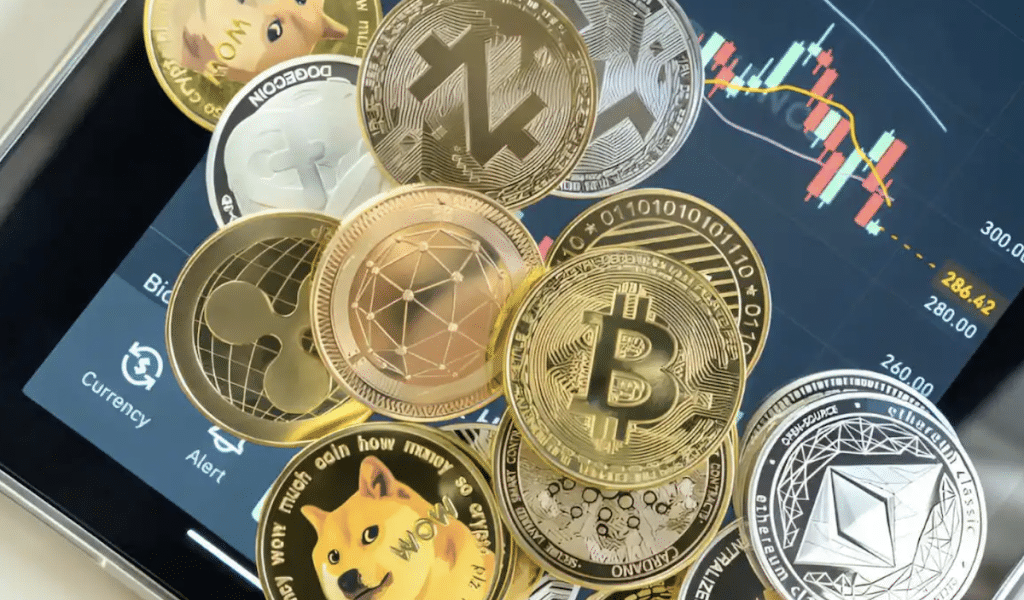Understanding Different Types of Crypto Assets
Cryptocurrencies are digital assets that can be used in ways that standard currencies can’t. They have had a huge impact on the financial world. Bitcoin fans and buyers both have to keep track of a wide range of assets, each with its own set of features and functions. In this post, we’ll look at the details of these digital assets to shed light on their types and uses.
During the past few years, DeFi coins have grown in popularity in the cryptocurrency market. They are very different from regular money in how they work. Lots of people are interested in this business because it could help people around the world who can’t get help from regular banks get money faster.
One more trend that has made the bitcoin world more diverse is the rise of non-fungible tokens. Unlike other digital goods, NFTs can only be used once. They prove that you own something or that it is real, whether it’s digital or real. Arts, games, and entertainment are some of the areas that have used this new technology. It has opened up new opportunities for both makers and collectors.
Blockchain Technology: Trailblazers Creating the Future
The most popular and original kind of crypto assets are cryptocurrencies, which operate as digital or virtual currencies with security provided by encryption. Typically constructed on blockchain technology, these virtual currencies operate on decentralized networks. Their impact goes beyond just digital assets; they are also paving the door for creative blockchain applications and disrupting conventional ideas of cash.
Using Utility Tokens to Manage Access in Blockchain Environments
Utility tokens in a blockchain environment stand for access to a particular good or service. In contrast to cryptocurrencies, its main function is to make a particular platform easier to use or access rather than acting as a means of exchange.
Various Uses for Utility Tokens:
- enabling transaction fees to be discounted.
- gaining access to premium features on decentralized networks.
Security Tokens: Tokenizing Ownership in the Digital Age
Security tokens are produced and maintained on a blockchain, and they represent ownership in conventional assets like stocks, real estate, or bonds. Since these tokens frequently signify ownership of a tangible item, they are governed by regulatory systems.
Regulatory considerations of security tokens :
- Regulation Compliance: In order to issue and trade security tokens, one must follow the rules set by regulators.
- Integration with Financial Institutions: Blockchain technology is becoming more and more popular in traditional financial institutions thanks to strict rules from regulators.
- Innovation and Protecting Investors: Regulatory concerns push people to think of new ideas, which helps create safe and open tokenization platforms.
- Market Credibility: Following the rules makes security tokens more trustworthy, which attracts big investors looking for a safe and regulated place to spend.
Regulation compliance is required for the issuing and trading of security tokens. In addition to protecting investors, this regulatory oversight encourages the assimilation of blockchain technology into established financial institutions.
With continuous debates about legal frameworks, tokenization of different assets, and the possible disruption they could bring to established financial systems, the world of security tokens is always changing. Investors and market participants will find it more and more important to comprehend security tokens’ significance in defining the digital age of ownership as their adoption picks up steam.
NFTs, or non-fungible tokens: Defining Digital Realm Ownership Again
Digital assets that are distinct and cannot be swapped or replaced one for the other are known as non-fungible tokens. They stand in for ownership or authenticity verification for a particular object, frequently in the digital domain, like virtual real estate, collectibles, or digital art.
The effects of NFTs on culture:
- Beyond the realm of digital art, NFTs have sparked a cultural revolution in our understanding of authenticity and ownership.
- For both producers and collectors, NFTs have created new opportunities ranging from virtual real estate to in-game goods.
Stablecoins: Consistency in Changing Markets
Stablecoins are digital currencies designed to lessen market volatility by tying its value to a reserve of assets, which are often commodities like gold or traditional fiat currencies such as the US dollar. They are a popular choice for traders and investors searching for a dependable source of wealth due to their steadiness.
Stablecoin use cases:
- Enabling quicker international transfers.
- providing a refuge in times of market volatility.
As the cryptocurrency market grows, stablecoins are becoming more than just a safe way to store money. They are seen as important tools for the wider use of digital assets because they work with blockchain technology and are connected to open finance as asset-backed crypto explained. Traders and buyers see stablecoins as a flexible way to deal with the constantly changing financial world and a safe haven when the market is unstable. The versatility and steady value offer of stablecoins are factors that sustain their appeal to a wide spectrum of market players.
In summary
As the crypto ecosystem continues to innovate, the diversity of crypto assets expands, offering a choice of possibilities for investors and users. Comprehending the distinct categories of cryptocurrency assets is imperative for making knowledgeable investment choices and maneuvering through the dynamic terrain.
Every category of token—digital currencies, utility tokens, security tokens, NFTs, stablecoins, governance tokens, or wrapped tokens—has a unique impact on how blockchain technology and decentralized finance develop in the future. In this fascinating and revolutionary time, be informed, investigate your options, and select the cryptocurrency assets that suit your interests and financial objectives.
